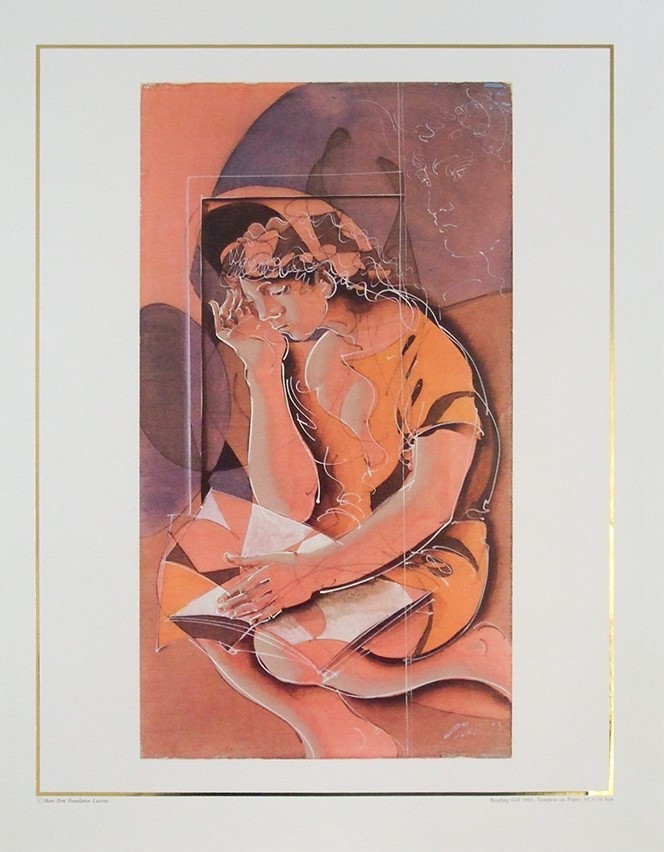“If I had only written this one book …”
About the task and responsibility of authors of books for children and young people
by Eliane Perret
Many parents would like their children to enjoy reading, because it is not only an important skill to succeed in school, but a cultural technique that connects us with our fellow human beings and the world. It requires an emotional activity on the part of the reader to engage with a story, to grasp it mentally and to enter into an inner dialogue with the protagonists of a book. A mental and emotional task which is simply without a parallel! Especially in the last few months, when many families spent more time at home due to the pandemic, some parents realised that reading would be a good alternative to screen media. They realised how many hours their children and young people spent gaming and chatting, and many rightly feared a dependency associated with this. But what reading material could be used to create an attractive counterbalance here?
Walking through the bookshops and also libraries could often leave one perplexed, annoyed or even stunned, as Nicole Duprat’scontribution from France [page 14]shows. Perhaps it helps to take up basic thoughts, but also one’s own memories of reading.
Getting to know people in their world
When I unwrapped a book from the wrapping paper at Christmas of my first year at school, I had great joy and I immediately set about reading the “Colourful Stories”, as the book was called, in the following days. Since then, books have been my faithful companions and have broadened my view of the world. At first it was fairy tales, but soon I began to long for “real” stories, by which I meant those that had a connection to reality. These could be animal stories, but also books that describe the everyday life and adventures of children and their families. Through “Hansi and Ume” by Elsa Muschg, I learned a lot about the life and culture in Japan and was fascinated by room walls made of paper, on which you were not allowed to write or drill a hole. When I devoured “Heidi” by Johanna Spyri, I experienced how a bitter old man became a warm-hearted grandfather and how the relationship between his granddaughter and him held enriching tasks for both of them. I immersed myself in the life story of “Anneli” from the Tösstal, which was written by Olga Meyer based on her mother’s biography and became a classic children’s book. It gave me my first insight into the industrial history of the Zurich Oberland. The ideas of the “Red Zora” by Kurt Held accompanied me on our play afternoons in the forest. When my aunt gave me “Sadako will leben” (The Day of the Bomb) by Karl Bruckner, I not only feverishly wondered whether the girl would be healthy after folding a thousand cranes, but I also learned a lot about the devastating consequences of the atomic bomb dropped on Hiroshima.
I could list many more books that I spent hours with and that made me laugh and cry. Even today, it is still my concern to track down books that would give children and young people the same experience as me. I would heartily wish it for them! And there are still those authors who join Olga Meyer and can say of themselves: “I wrote out of an inner compulsion, because I could not do otherwise. [...] I wrote out of joy, with the sole intention of grasping the child’s heart, creating from its world and helping it to move forward on the path of goodness”.1
Confusing and ideologising
Unfortunately, when you walk through the children’s and young adults’ book sections, you also find a lot of other things. Politically charged and often ideologised topics such as climate change, Corona and euthanasia find their way into picture books.
“Children’s hearts are easily influenced,” wrote Olga Meyer. And who gives the right to abuse this fact for selfish purposes? Next to them are thick tomes in which little boys rule a magical world. They are disseminated – medially staged – find a wide readership and are imitated in endless variations. Here too: What is the point of confusing the next generation with unreal, constructed and often confused fantasies, apart from financial interests?
And this in a developmental phase in which they naturally like to turn to the “real” problems and discuss them? It is to be hoped that the target group of children and young people will “sense whether a book is ‘made’ or whether it is inwardly true, whether it is real. They feel the warmth that comes to them, the love with which the characters are realised,” as Olga Meyer wrote.2
Committed to an ethic
Writing a book for children or young people is a demanding task. It requires the authors to assume their human and civic responsibility. Ideologies and subtle manipulation mechanisms have no place there. Every writer must honestly ask himself whether he is committed to ethics, as Olga Meyer reflected after meeting one of her readers:
“And if I had only been able to create this one work in my life, what it has given to this girl, would have been proof enough for me that books intervene in the lives of young people in a guiding way – for good or for bad – that they have to fulfil a task and that the author must be aware of this. I would like to say that he must take part in the healthy mental development of the young person, that he must love him.”3•
1Meyer, Olga.Olga Meyer erzählt aus ihrem Leben.(Olga Meyer talks about her life). Zurich 1968, p. 259
2op. cit. p. 260
3op. cit. p. 275
